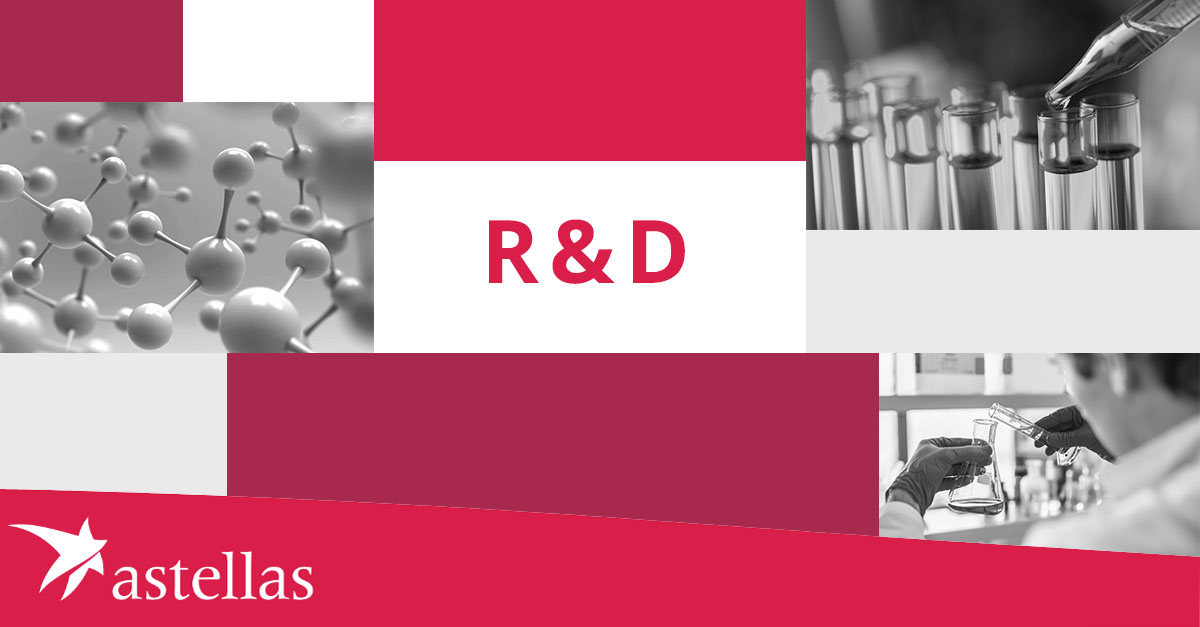You are now leaving XTANDI.com
The website you are about to visit is not owned or controlled by Astellas. Astellas are not responsible for the information or services on this site.

By Yoshitsugu Shitaka, President, Astellas Institute for Regenerative Medicine
Astellas strives to be on the forefront of healthcare change and our work in regenerative medicine is a clear example of how we are turning innovative science into value for patients. At the Astellas Institute for Regenerative Medicine (AIRM), we are investigating pluripotent stem cell-derived therapies that have the potential to rejuvenate, regenerate and replace damaged tissues. Pluripotent stem cells are stem cells that have the potential to develop into many different cell types in the body.[1] By directing the body’s capacity to renew itself, regenerative medicine may fundamentally change the way we think about managing disease.
The most advanced developments in our regenerative medicine pipeline are in the field of ophthalmology, where we have pioneered research into the use of cell therapies to address vision loss. Our investigational cell therapy ASP7317 is in a clinical trial for people with dry age-related macular degeneration (AMD). Dry AMD is a leading cause of vision loss among people age 50 and older.[2] It causes damage to the macula, a small spot near the center of the retina. Many people with dry AMD have difficulty seeing in the center of their field of vision, which can interfere with everyday activities such as driving, reading and cooking, as well as the ability to recognize faces. Currently, the only treatment for people with dry AMD is dietary vitamin and other supplements.[3],[4]
AIRM is sponsoring a two-stage, multicenter clinical trial to evaluate the optimal dose, safety and efficacy of ASP7317 as a potential treatment for dry AMD. ASP7317 is an investigational therapy derived from pluripotent human stem cells. It is administered into the eyes of patients with dry AMD to replace dysfunctional cells and tissues caused by dry AMD.
Through this study and others, we are exploring how stem cell-derived therapies could potentially offer innovative new treatment options for people living with serious medical conditions where there are unmet needs. Our ongoing investments into regenerative medicine support bold but pragmatic thinking, facilitate smart risk-taking and encourage strong and ethical decision making throughout all stages and aspects of product development to foster living innovation that transforms the production, practice and delivery of medicine.
We are excited about the potential for ASP7317, and we look forward to bringing you updates as the program progresses. For more information, please visit ClinicalTrials.gov or www.astellas.com/us/innovation/r-and-d.
###
[1] National Institutes of Health, U.S. Department of Health and Human Services. Stem Cell Information (2016). https://stemcells.nih.gov/info/faqs.htm. Accessed 10-19-2018.
[2] Prevent Blindness. Dry Age-related Macular Degeneration (01-13-2015). https://www.preventblindness.org/sites/default/files/fact_sheets/FS101_DryAMD.PDF. Accessed 10-08-2018.
[3] National Eye Institute. Facts About Age-Related Macular Degeneration (2015). https://nei.nih.gov/health/maculardegen/armd_facts. Accessed 10-08-2018.
[4] Prevent Blindness. Dry Age-related Macular Degeneration (01-13-2015). https://www.preventblindness.org/sites/default/files/fact_sheets/FS101_DryAMD.PDF. Accessed 10-08-2018.
 |
Get only the email alerts you want.
For media inquiries and reporter requests, please email us at corporate.communications@us.astellas.com.
Our communications team will respond to verified media requests within 24-48 hours as appropriate.
If you are not a reporter and need assistance, please visit our contact us page that includes information for patients, healthcare providers and researchers.
This website is intended for U.S. residents only. This website contains information about products that may not be available in all countries, or may be available under different trademarks, for different indications, or in different dosages. Nothing contained herein should be considered a solicitation, promotion or advertisement for any drug including those under development. Any information on the products contained herein is not intended to provide medical advice nor should be used as a substitute for the advice provided by your physician or other healthcare provider.
The site uses cookies to provide you with a more responsive and personalized service and to analyze site traffic. By using this site, you accept our use of cookies as described in our privacy policy. Please read our privacy policy for more information on the cookies we use, the processing of your personal data and how to delete or block the use of cookies.